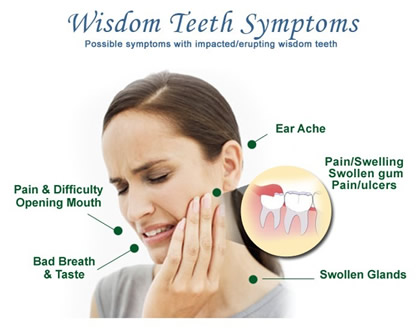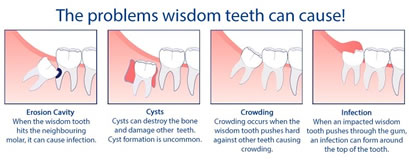Wisdom tooth surgery


 The most commonly performed surgical procedure in most oral and maxillofacial surgery practices is the removal of impacted third molars. Extensive training, skill, and experience allow this procedure to be performed in an atraumatic fashion with local anesthesia, sedation, or general anesthesia. The decision to remove symptomatic third molars is not usually difficult, but the decision to remove asymptomatic third molars is sometimes less clear and requires clinical experience. A wide body of literature attempts to establish clinical practice guidelines for dealing with impacted teeth
Data are beginning to accumulate from third molar studies, which hopefully will provide surgeons and their patients with evidence-based guidelines regarding elective third molar surgery
The association of periodontal pathology and occlusal caries with asymptomatic third molars has been studied previously. Twenty-five percent of patients with asymptomatic third molars were found to have increased periodontal probing depths and attachment loss, increased periodontal pathogen colonization, and increased levels of inflammatory mediators Shugars and colleagues examined a group of patients with at least one fully erupted third molar and found that 28% had caries in at least one third molar tooth. It is currently recommended that the indications for elective therapeutic third molar removal be based on good clinical science. Accordingly, patients and the community at large should be adequately informed.
Once the decision is made to remove impacted third molars, a classification system based on clinical and radiographic findings becomes a tool for predicting the difficulty of removal. Accessibility significantly influences the degree of difficulty of removal of a third molar. The ease with which the tooth can be removed is also influenced by the degree of surgical exposure, the ability to create a pathway for tooth delivery, and the ability to gain purchase (natural or surgically prepared) on the tooth. A classification system is a useful tool to categorize the degree of impaction and plan a surgical approach that facilitates removal and minimizes morbidity.
The most commonly performed surgical procedure in most oral and maxillofacial surgery practices is the removal of impacted third molars. Extensive training, skill, and experience allow this procedure to be performed in an atraumatic fashion with local anesthesia, sedation, or general anesthesia. The decision to remove symptomatic third molars is not usually difficult, but the decision to remove asymptomatic third molars is sometimes less clear and requires clinical experience. A wide body of literature attempts to establish clinical practice guidelines for dealing with impacted teeth
Data are beginning to accumulate from third molar studies, which hopefully will provide surgeons and their patients with evidence-based guidelines regarding elective third molar surgery
The association of periodontal pathology and occlusal caries with asymptomatic third molars has been studied previously. Twenty-five percent of patients with asymptomatic third molars were found to have increased periodontal probing depths and attachment loss, increased periodontal pathogen colonization, and increased levels of inflammatory mediators Shugars and colleagues examined a group of patients with at least one fully erupted third molar and found that 28% had caries in at least one third molar tooth. It is currently recommended that the indications for elective therapeutic third molar removal be based on good clinical science. Accordingly, patients and the community at large should be adequately informed.
Once the decision is made to remove impacted third molars, a classification system based on clinical and radiographic findings becomes a tool for predicting the difficulty of removal. Accessibility significantly influences the degree of difficulty of removal of a third molar. The ease with which the tooth can be removed is also influenced by the degree of surgical exposure, the ability to create a pathway for tooth delivery, and the ability to gain purchase (natural or surgically prepared) on the tooth. A classification system is a useful tool to categorize the degree of impaction and plan a surgical approach that facilitates removal and minimizes morbidity.










